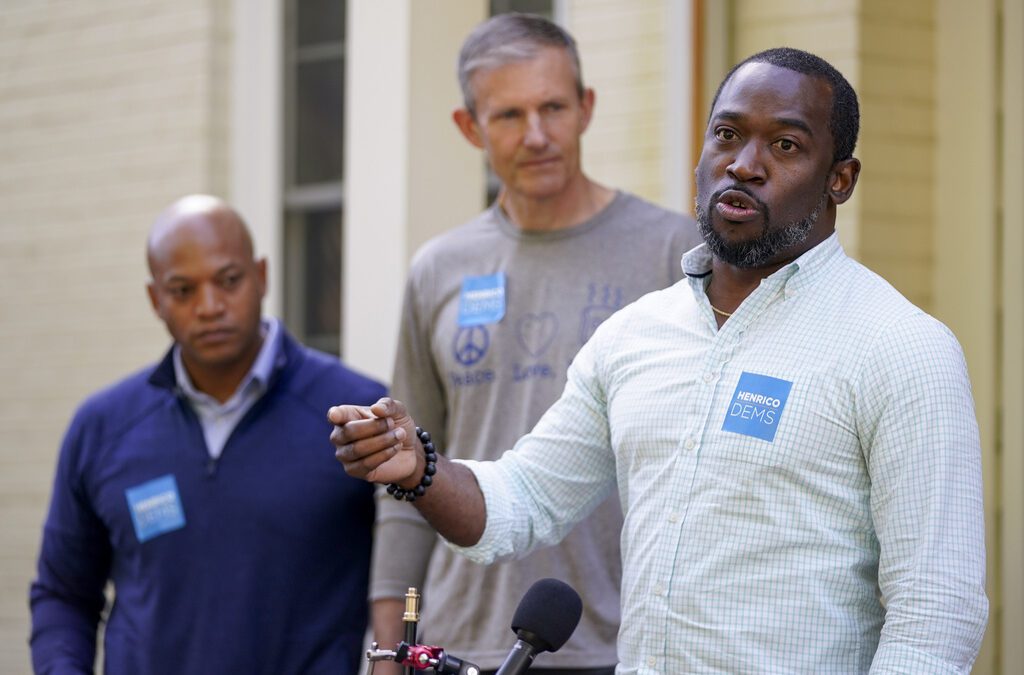This is the first of a multi-part series exploring the minimum wage in Virginia.
Earlier this year, Virginia’s Republican-controlled General Assembly failed to raise the state’s minimum wage, which sits at $7.25 per hour.
Indeed, while 20 other states raised their minimum wages this year, Virginia continues to lag behind, trailing even many deeply conservative states in their minimum wage rates.
Before we get into the specifics of Virginia’s minimum wage issues, let’s take a quick look at the history of the minimum wage in the United States, the role of states, and the current battle over raising the minimum wage in Virginia.
History of the minimum wage
The minimum wage is the lowest wage that employers are legally allowed to pay their workers. While the idea for the minimum wage was born in Massachusetts in 1912, it was enshrined into federal law by The Fair Labor Standards Act of 1938 (FLSA), with the purpose of stabilizing the post-depression economy, protecting laborers, and providing a minimum standard of living for employees.
The FSLA provided other significant protections for workers as well, including overtime pay for certain jobs, child labor restrictions, and recordkeeping requirements.
The FLSA which set the initial minimum wage at $0.25 per hour for eligible workers and it has since been raised 22 times, most recently in July 2009 to the current rate of $7.25 per hour.
In 1938, the Act applied only to industries whose combined employment represented about 20% of the labor force, but as coverage has grown, the minimum wage has expanded to cover 84% of the labor force.
In 2017, roughly 1.8 million workers, or 2.3% of all hourly paid workers, earned the minimum wage or less. Those who earned less were either tipped employees, full-time students, youth workers or disabled workers.
Minimum wage today
The minimum wage currently sits at $7.25 per hour. If that sounds like it’s not enough to live on, it’s because for many people, it’s not.
This wasn’t always the case, though. Until the early 1980s, an annual minimum-wage income, after adjusting for inflation, was enough to keep a family of two above the poverty line. But in the decades since, the minimum wage has not kept up with inflation, and an individual earning $7.25 per hour, working 40 hours per week, 52 weeks per year earns only $15,080, which falls below the federal poverty line for families of two or more.
According to the Economic Policy Institute, an independent, non-profit think tank, workers today who earn the federal minimum wage of $7.25 per hour are, after adjusting for inflation, paid 29% less than their counterparts were in 1968. The EPI also says that if the minimum wage kept pace with the rate of labor productivity growth since 1968, it would be over $20 per hour today.
Instead, the federal minimum wage remains at $7.25.
Where the states come in
While the federal government has failed to raise the minimum wage, some states have taken matters into their own hands.
Spurred on by activism and pressure from groups like Fight for 15, twenty states raised their minimum wage in 2019, as did several cities and counties. Many of these states have also enacted future increases, taking their minimum wage rates to $15 over the course of the next several years.
While many states have raised their minimum wage, five states have no minimum wage laws, two others have rates lower than the federal rate, and fourteen more, including Virginia, set their minimum wage at the federal rate of $7.25.
Virginia
In 2017, 15,000 Virginia workers earned the federal minimum wage of $7.25 per hour, while another 55,000 earned less. These 70,000 workers made up 3.6% of all hourly paid workers in Virginia, which gave Virginia the fifth highest percentage of hourly paid workers earning at or below the minimum wage among all 50 states and Washington, D.C.
As housing prices and the cost of living has surged in parts of the state, advocates have continued to push for the Commonwealth to raise its minimum wage.
This year, state Sen. Rosalyn Dance (D-Petersburg) proposed SB1200, which would have raised the minimum wage to $10 per hour this summer, to $13 an hour in 2020, and then $15 per hour in 2021.
The bill died on a party-line vote in the state Senate, with all 21 Republicans opposing the legislation and all 19 Democrats voting for it. Republicans also blocked another bill from Sen. David Marsden (D-Fairfax), that would’ve raised the minimum wage to $11.25 between now and 2021.
Democrats and activists continue to argue that Virginia is long overdue in raising the minimum wage, while Republicans have stuck to their favorite (disproven) talking point that raising the minimum wage would destroy jobs by making it too expensive for employers to keep on as many workers.
All 40 Senate seats and all 100 seats in the House of Delegates are on the ballot this fall, and already, Democrats are campaigning on the minimum wage issue.
While the state has failed to raise its minimum wage, the tide seems to be turning and many companies and organizations are taking action into their own hands.
Amazon declared it would pay all workers, including those at it’s new headquarters in Arlington County, at least $15 per hour, and UVA recently announced it would pay all 1400 of its full-time, benefits-eligible employees a living wage of $15 per hour, effective January 1.
Wondering what a living wage is? Check back tomorrow for part two of our minimum wage series, where we explore the idea of a living wage vs. the minimum wage.
Politics

Biden administration bans noncompete clauses for workers
The Federal Trade Commission (FTC) voted on Tuesday to ban noncompete agreements—those pesky clauses that employers often force their workers to...

Democratic shakeup in Virginia primaries for governor, lieutenant governor
Richmond Mayor Levar Stoney quit his bid for governor and jumped into the race to be the Democratic nominee for lieutenant governor. The race for...
Local News

Virginia verses: Celebrating 5 poetic icons for National Poetry Month
There’s no shortage of great writers when it comes to our commonwealth. From the haunting verses of Edgar Allan Poe, who found solace in Richmond's...

Join the fun: Recapping Family Literacy Night’s storybook adventures
When’s the last time you read a book aloud with a loved one? If it’s difficult to answer that question, then maybe it’s time to dust off that TBR...





